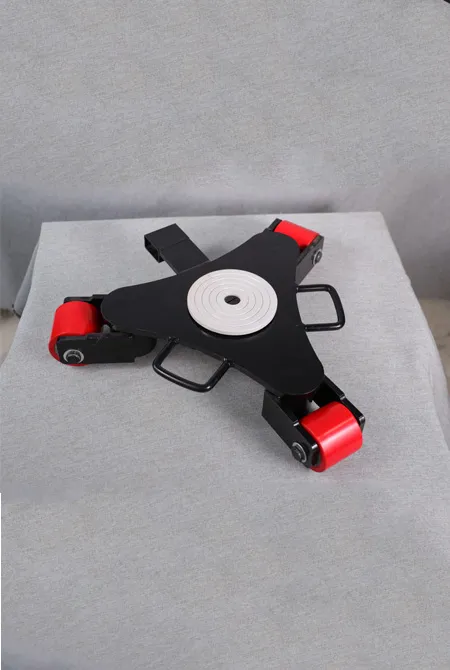Latest Developments in Overhead Traveling Crane Technology and Innovations
New Overhead Travelling Cranes Innovations and Benefits
Overhead travelling cranes have long been an integral part of various industrial operations, notably in manufacturing facilities, warehouses, and construction sites. These cranes are designed to lift and move heavy loads efficiently across a designated area. In recent years, advancements in technology and design have introduced a new wave of overhead travelling cranes, drastically improving their performance, safety, and overall user-friendliness. This article explores the latest innovations in overhead travelling cranes, the benefits they offer, and their role in modern industrial operations.
Understanding Overhead Travelling Cranes
Overhead travelling cranes, often referred to as bridge cranes, consist of a fixed steel framework that spans the workspace, with a hoist that can move horizontally and vertically. The flexibility of movement allows them to cover a significant area, making them ideal for lifting and transporting heavy loads in confined spaces. Traditionally, these cranes have been operated manually; however, modern versions incorporate advanced automation and digital technologies.
Innovations in Overhead Travelling Cranes
1. Smart Technologies The integration of smart technologies has revolutionized overhead travelling cranes. Many new models are now equipped with IoT sensors that monitor performance and safety in real-time. These sensors can track parameters such as load weight, operational speed, and equipment wear, providing operators with valuable data to ensure efficient and safe operations. Predictive maintenance can be initiated based on this data, reducing downtime and maintenance costs.
2. Enhanced Safety Features Safety is a paramount concern in industrial settings. New overhead travelling cranes are designed with advanced safety features, such as overload protection systems, collision detection, and emergency stop mechanisms. These features help to prevent accidents and ensure that operators can work confidently, knowing that safety measures are in place.
3. Lightweight Materials The use of lightweight materials in crane construction has led to an increase in the lifting capacity while reducing energy consumption. Advanced alloys and composites not only enhance the durability of the cranes but also contribute to overall operational efficiency. Lighter cranes require less power to operate, further minimizing energy costs.
4. Ergonomic Design Modern cranes are designed with ergonomics in mind. Controls are positioned for easy accessibility, and intuitive user interfaces have improved operator experience. This ergonomic design reduces the risk of strain injuries and enhances productivity, allowing operators to efficiently manage load movements throughout the workspace.
new overhead travelling cranes

5. Remote Operation The advent of wireless technology has paved the way for remote-controlled cranes. Operators can now manage the cranes from a safe distance, reducing the risk of injury in hazardous environments. Remote operation also allows for better visibility and control, particularly in complex lifting operations.
Benefits of Modern Overhead Travelling Cranes
1. Increased Efficiency The combination of automation, smart technology, and enhanced safety features significantly boosts the operational efficiency of overhead travelling cranes. Faster lift and transport times contribute to overall productivity in industrial settings.
2. Cost Reduction Although the initial investment in modern cranes may be higher, the long-term savings associated with reduced energy consumption, lower maintenance costs, and fewer workplace accidents make them a financially sound choice for businesses.
3. Versatility The latest overhead cranes are versatile and can be tailored for various applications. Whether in manufacturing, shipping, or construction, these cranes can handle different materials and loads, making them indispensable tools across industries.
4. Sustainability With a growing emphasis on sustainability, modern overhead travelling cranes are designed to be more energy-efficient and environmentally friendly. Their lightweight construction and smart operation contribute to reduced carbon footprints in industrial operations.
5. Improved Operator Safety Enhanced safety features and ergonomic designs not only protect the loads being lifted but also prioritize the well-being of the operators. Fewer accidents lead to lower insurance costs and higher employee morale.
Conclusion
The evolution of overhead travelling cranes reflects the broader trends of technological advancement and safety consciousness in the industrial sector. As industries continue to seek higher efficiency and safety standards, the adoption of new overhead travelling cranes will undoubtedly play a crucial role. Investing in these modern systems can lead to significant operational improvements, making them a worthwhile consideration for any industrial operation looking to thrive in a competitive market.
-
Unlock Seamless Relocation with Our Heavy Equipment Moving ExpertiseNewsJun.06,2025
-
Unleash Unrivaled Flexibility with Our Adjustable Gantry CraneNewsJun.06,2025
-
Unleash Heavy-Duty Efficiency with Our Industrial Gantry Crane SolutionsNewsJun.06,2025
-
Revolutionize Steel Handling with Our Magnetic Lifter RangeNewsJun.06,2025
-
Master Equipment Mobility with Premium Machinery Mover SolutionsNewsJun.06,2025
-
Elevate Your Material Handling with Magnetic Lifter TechnologyNewsJun.06,2025
-
YS Permanent Lifting Magnets: The Smarter Way to Handle SteelNewsMay.22,2025
